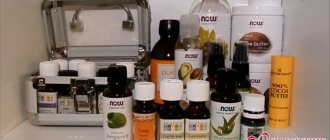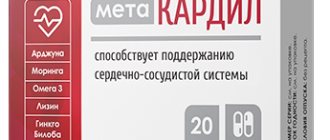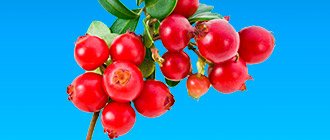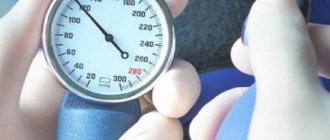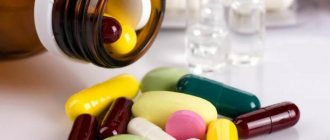A person suffering from hypertension (high blood pressure) agrees to use any means to lower the blood pressure monitor. You can try replacing medications that are mainly used in such cases with drinks and fruit drinks prepared at home. They should be prepared from wild and cultivated berries, which can be collected in the forest, grown in a personal plot or bought in a store.
Blood pressure berry is an ideal option for a person diagnosed with hypertension. Taking such a tasty “medicine” will not only reduce blood pressure, but will also be beneficial for the whole body.
Every person knows that berries are simply a storehouse of vitamins and nutrients. Their regular use:
- increases immunity,
- makes arteries and blood vessels more elastic,
- thins the blood
- has a positive effect on the heart,
- strengthens all internal systems of the body.
Kalina
Viburnum is considered the most powerful natural remedy that can fight hypertension and more. The composition of the red berry is simply unique; each berry contains:
- multivitamins,
- essential oils,
- antioxidants,
- flavonoids,
- saturated fatty acids.
A small bunch of viburnum can quickly lower blood pressure, relieve inflammation, normalize the functioning of the head and vascular system, and improve immunity.
It should be collected after the first frost and can be stored frozen or dried.
Recipe for a delicious “medicine”:
Wash the viburnum, dry it, and pass through a meat grinder. Add natural honey to the resulting mass at a ratio of one to one, mix thoroughly. Store in the refrigerator, eat one tablespoon daily.
Currant
Blackcurrant contains a huge amount of ascorbic acid (even more than lemon). Fresh berries, pureed with sugar or frozen in the freezer, are a good help for hypotensive disorders. Dried currants will also help with high blood pressure.
Recipe for a healing decoction:
Take 2 tablespoons of dry berries, pour a glass of boiling water over them, cook in a steam bath for several minutes, let cool, drink 100 ml daily before meals 2-3 times a day.
Berries that lower blood pressure
For high blood pressure, the most useful berries are viburnum, hawthorn, blueberries, rose hips and others. Some of them can support the effect of hypertension medications. Regular use brings positive results.
Hawthorn
The effect of hawthorn on the cardiovascular system has been confirmed by numerous studies. The fruits contain procyanidins, flavonoids, vitamins C and A, and sorbitol. Flavonoids relax vascular smooth muscle (mainly coronary vessels) and gently lower blood pressure.
Procyanidins have a positive inotropic effect.
Fruit extract has a positive effect on the lipid profile, reducing the risk of atherosclerosis. It has a hypotensive effect - dilates and strengthens blood vessels.
Those suffering from hypertension are recommended to consume fresh hawthorn berries. From dried ones, prepare a decoction.
To prepare a decoction, pour 20 grams of fruit into a glass of water. Bring to a boil, and, reducing heat, simmer for half an hour. After straining, top up to the original volume. Drink a tablespoon three times a day.
Kalina
Due to the presence of carotenoids and flavonoids, viburnum fruits have a lipotropic effect, which helps prevent the deposition of cholesterol plaques on the walls of blood vessels, and, therefore, reduce blood pressure. They have a diuretic effect.
For hypertension, juice from berries, decoctions or prepared with sugar or honey are useful.
Those who suffer from hypertension are recommended to eat 6 berries daily along with the seeds.
Twisted with honey, consume 30 grams 4 times a day for 2 weeks. After a break, the course can be repeated.
Red rowan
Red rowan fruits are rich in magnesium, a mineral that helps normalize blood cholesterol levels.
20 minutes before a meal, it is recommended to eat 1 tbsp. a spoonful of fresh berries.
An infusion is prepared from dried, frozen or fresh fruits by brewing 30 grams of fruits with a glass of boiling water in a thermos. Leave for an hour.
Chokeberry
Chokeberry or chokeberry helps not only reduce blood pressure, but also stabilize it.
Aronia berries contain tannin compounds that strengthen the walls of blood vessels. The dark, almost black color is provided by anthocyanins.
Chokeberry can be consumed in the form of drinks, pureed with sugar, jam or jam. Retains properties when frozen. It is recommended to drink 100 ml of fruit drink daily.
Twisted with sugar - a tablespoon three times a day, add to tea.
A decoction is prepared from dried fruits and infused in a thermos.
Cranberry
Cranberry is known as a urinary tract disinfectant. Contains:
- Vitamins;
- Minerals;
- Antioxidant compounds
helping to relieve inflammation in the bladder and kidneys.
Cranberry juice helps:
- Normalizes cholesterol and blood sugar levels;
- Maintains normal blood pressure;
- Reduces the risk of stroke;
- Regulates the presence of intercellular fluid in the body;
- Prevents atherosclerosis.
However, those taking medications to lower blood pressure should be careful when drinking cranberry juice. Studies show that it may interact with some drugs used to treat this disease, especially calcium antagonists (for example, amlodipine). Cranberry can disrupt the metabolism of drugs, enhancing their effect. Consequently, it can lead to pressure drops.
Cowberry
The effect of lingonberries is similar to cranberries. The polyphenolic compounds and flavonoids contained in the fruits have an effect on the cardiovascular system.
Lingonberries can be consumed fresh, in the form of juice, compote, or fruit drink. For future use, they are frozen or mixed with sugar and honey.
Black currant
Blackcurrant peel contains anthocyanins - natural plant pigments. Thanks to their antibacterial properties, they help fight harmful bacteria in the digestive system - the causes of many stomach problems.
Anthocyanins also have a positive effect on the circulatory system, helping to strengthen capillaries, promote proper heart function and maintain proper blood pressure.
Research has shown that people who regularly consumed blackcurrants and other berries had an 8% lower risk of hypertension.
Fresh currants contain valuable nutrients. It is suggested that 1 glass of fresh currant juice per day is effective in lowering blood pressure.
Dried berries, which are brewed as tea, are useful. Combined with other berries for hypertension.
Rose hip
Rose hips are a well-known remedy that strengthens the immune system during the season of viral diseases. Brew at high pressure. Due to the presence of carotenoids, ascorbic acid and other compounds, it has a tonic effect on blood vessels.
To prepare the drink, brew 50 grams of rose hips in a thermos overnight with 500 ml of boiling water. Drink throughout the day, dividing into several servings.
Honeysuckle
A not very common shrub with fruits containing large quantities of:
- Ascorbic acid;
- Beta carotene;
- Vitamins A, group B;
- Macro and microelements.
Anthocyanins, which have a hypotensive effect, give the berries their almost black color.
Honeysuckle berries are brewed as tea. Fruit juice is being prepared. To do this, grind 1 cup of fresh or frozen berries in a blender. Pour 250 ml of hot water. After steeping, strain through a strainer or cheesecloth. Drink 100 ml twice a day.
Cranberry
Cranberry is one of the most powerful remedies that helps cope with colds, inflammation and high blood pressure. The beneficial substances that the berry is rich in can:
- ensure elasticity of blood vessels due to the high content of flavonoids;
- normalize heart function due to a high concentration of vitamin C;
- boost immunity due to a large number of antioxidants.
RECOMMENDED: How does Ivan tea affect blood pressure?
The berry is good not only for relieving pressure and eliminating cold symptoms, cranberry perfectly relieves swelling during pregnancy. The sour berry is also recommended for children to boost their immunity. Storage recipe:
Fresh berries should not be frozen for long-term storage. Just rinse them, put them in glass jars and fill them with cold water. This way cranberries can be stored until spring without losing their beneficial properties.
Beverages
For high blood pressure, a large number of different drinks are used as a tasty, effective, safe method to reduce blood pressure: from plain water, natural juices to hibiscus tea.
Water for hypertension
The most affordable drink to maintain blood pressure at a normal level. The mechanism of action is simple: a lack of fluid in the body leads to dehydration, thickening of the blood, disruption of normal blood flow and, as a result, increased blood pressure.
If you have hypertension, you need to drink enough water, which is very simple to calculate: 30-40 ml are needed per 1 kg of weight. The gap between the numbers suggests the correspondence of the amount of liquid drunk depending on weather conditions (wet-dry), time of year (hot-cold), and individual physiological characteristics of a person.
For example, a person weighing 70 kg per day requires: 70 x 30 (40) = 2.1 l (2.8 l). This takes into account only water, not liquids found in other foods and drinks.
Water:
- strengthens the walls of blood vessels;
- flushes out harmful cholesterol and toxins;
- adjusts the total volume of circulating blood, helping the heart;
- improves blood composition;
- Replenishes fluid lost through sweat, breathing, and through the digestive system.
There are many schemes for the correct drinking regime (including the proposed calculation), but the most popular of all others is the rule of 8 glasses: supposedly this is how much spring water a person needs to drink per day. However, despite its apparent simplicity, the rule is dangerous. An increase in the total volume of circulating blood above normal will lead to excessive stress on the heart with all the ensuing consequences. Each person is individual, so for hypertensive patients, calculating the required daily amount of water is vital.
Mineral waters, especially with gas, are not recommended for hypertensive patients, and “Essentuki” is completely dangerous because it disrupts the body’s potassium-sodium balance, causing an increase in blood pressure.
Milk and dairy products
Of all types of dairy drinks, only skim milk can normalize blood pressure, saturating the blood with calcium, strengthening the walls of blood vessels, thereby normalizing vascular parameters. Why low fat? Because in this drink there is calcium instead of fat, in all other versions it’s the other way around.
- Which tea lowers blood pressure and which is best to drink for hypertension?
Among dairy drinks, low-fat yogurt and 1% kefir have a similar effect.
Natural juices
There are a lot of hypotensive juices: vegetable, berry, fruit. The most useful is beet juice. It contains a lot of potassium and folic acid, which regulate blood pressure levels in the human body.
Beets contain muscle relaxants that relieve vascular spasms and improve microcirculation. The downside of the drink is its specific taste, which not everyone likes, so it is usually mixed with more pleasant carrot or pumpkin juice. Carrots add carotene to the cocktail, which improves the elasticity of blood vessels, and pumpkin adds the ability to remove excess fluid and salts from the body. A spoonful of honey can be the icing on the cake.
Among fruit juices that lower blood pressure, apple and pomegranate juice should be highlighted. Apples, with the help of pectin, remove toxins, and pomegranate prevents the formation of atherosclerotic plaques due to its enzyme composition, improving blood flow to the myocardium. Half a glass of any juice every day is enough to maintain normal blood pressure.
Apricot and grapefruit juices are suitable for hypertensive patients. The first has a diuretic effect, and the second strengthens blood vessels due to the maximum concentration of vitamin C.
Berry juices are also useful, especially:
- cranberry juice is a powerful antioxidant that rejuvenates the body and vascular system, and also exhibits vasodilating properties;
- juice from chokeberry, which contains vitamins C, P, flavonoids. capable of improving the structure of blood vessels;
- blackcurrant juice – a source of vitamin C for capillaries.
Of course, there are other juices, from potato to exotic persimmon juice, we are talking about the most effective for lowering blood pressure.
Tea
For people suffering from hypertension, green, black tea (an alternative to coffee), and herbal tea are useful, but red Hibiscus tea is recognized as the most effective. Yes, this is, in fact, not tea - just dry leaves of a special plant - hibiscus. A natural antioxidant that rejuvenates the entire body as a whole, regenerating blood vessels, Hibiscus exhibits a diuretic effect, but most importantly, it contains biologically active substances that are similar in their action to remedies for high blood pressure and heart failure.
Among herbal teas, drinks based on stevia and mint should be highlighted. The first one controls cholesterol levels, the second one dilates blood vessels due to menthol, normalizing blood pressure.
- Does ginger affect blood pressure: does it increase or decrease it, what recipes are recommended for the heart?
Compotes
Another simplest, budget option for maintaining blood pressure within normal limits is drinking drinks. The most popular:
- compote of dried fruits, raisins, lemon - a source of vitamins and microelements that normalize metabolism, heart function, blood vessels;
- compote of prunes with honey - works similarly;
- chokeberry compote.
For taste, you can add a sprig of tarragon, a natural aphrodisiac.
Blueberries and blueberries
Blueberries and blueberries are wild blue berries that differ from the rest in one characteristic feature. They contain a unique component - a substance called pterostilbene. Its uniqueness lies in the fact that the substance removes cholesterol from the body, cleansing blood vessels and making them more elastic. It is this property that helps the berries have a positive effect on high blood pressure.
Delicious dessert recipe:
Beat half a glass of fresh berries in a blender, add a teaspoon of powdered sugar and 100 ml of chilled milk. Beat again until foam appears. A glass of this tasty drink a day will help get rid of problems with high blood pressure.
Hawthorn and rosehip
It is difficult to find people who have not heard about the beneficial fruits called rose hips or hawthorn. These shrubby plants have long been used in folk medicine to treat a number of diseases; decoctions and infusions from the fruits of the plants help lower blood pressure.
Since ancient times, rosehip has been used for colds, inflammation, headaches, high blood pressure; it is also useful for pregnant women as a general tonic.
Both collected fruits and dried berries are used. It is best to prepare infusions from rose hips; they retain the most beneficial substances.
Healing tea recipe:
Place 2 tablespoons of fruit in a wide-necked thermos, add boiling water, and close the lid tightly. Leave overnight. In the morning, strain the infusion, add a few tablespoons of honey, drink a little throughout the day.
Hawthorn is an excellent remedy not only for lowering blood pressure readings, but also for the treatment of cardiovascular diseases. Both the fruits and flowers of the plant are used in medicine.
Decoction recipe:
Pour 1 tablespoon of dried fruits with a glass of boiling water, simmer in a steam bath for 20 minutes, strain the broth, bring to the previous volume with boiled water. Take a tablespoon 3 times a day before meals.
What are the benefits of berries for blood pressure?
High blood pressure is a life-threatening condition that affects people all over the world, especially in highly developed countries.
The pressure of blood on the walls of the arteries is called blood pressure. As arteries harden and narrow due to cholesterol plaque and calcium buildup, pressure increases.
The health condition associated with chronic high blood pressure in the arteries is called hypertension or high blood pressure.
In some people it may develop without obvious symptoms and remain hidden for many years. Others show:
- Dull headache;
- Dizziness;
- Nausea;
- Rapid heartbeat
and other symptoms.
In men, it affects erectile function.
Berries and fruits contain essential nutrients that help normalize blood pressure. First of all, chemical compounds called anthocyanins.
Anthocyanins belong to the flavonoid family. They are found in large quantities in dark-colored fruits and berries, such as blueberries, raspberries, blackberries and others.
Research shows that consuming foods rich in anthocyanins can lower blood pressure in hypertensive patients and improve the condition of blood vessels.
In addition, berries are rich in:
- Vitamins, including A and C;
- Minerals, including magnesium;
- Microelements that have a beneficial effect on the functioning of the cardiovascular system.
Vitamin C and A are antioxidant compounds that neutralize the oxidative effects of free radicals.
Magnesium has a positive effect on the functioning of the nervous system and improves sleep. Strengthens the walls of blood vessels.
Studies show that eating berries:
- Strengthens the immune system;
- Has an anti-inflammatory effect;
- Helps lower blood pressure.
Cowberry
Lingonberry is a forest berry that helps cure many diseases.
Its effectiveness at high blood pressure has been known for a long time.
WE RECOMMEND: Eating the right fruits for blood pressure
The high content of polyphenols and flavonoids in lingonberries allows it to have a positive effect on the human heart and vascular system. There are also contraindications for taking products made from berries, including:
- hypotension (low blood pressure),
- urolithiasis disease,
- cholecystitis.
Regular intake of lingonberry juice leads to the following improvements:
- blood vessels are strengthened,
- metabolic processes are normalized,
- the work of the heart muscle is stabilized,
- body tone increases,
- sugar decreases.
Jam recipe:
Rinse the lingonberries, add water so that it lightly covers the berries, boil, drain the water, grind the berries in a meat grinder, add granulated sugar at a ratio of one to one. Simmer the jam over low heat until the sugar dissolves. Place into glass jars.
Honeysuckle
Honeysuckle is the name given to the elongated berries of a shrub plant that grows in the south, in Crimea and our region. They contain a whole list of useful substances that affect blood pressure:
- vitamins of group B, A;
- beta-carotene;
- ascorbic acid;
- a number of trace elements (magnesium, iron, copper, aluminum, strontium).
Taking fresh berries not only reduces high blood pressure, but also improves blood flow, increases hemoglobin, and removes toxins.
Recipe for a healthy infusion:
Grind a glass of fresh berries, add a glass of hot water. Infuse for 24 hours, take the infusion (without filtering) twice a day, half a glass before meals.
Dried fruits for hypertension
With an increased risk of cardiovascular diseases, nutritionists recommend including various dried fruits in the diet. They support the functioning of the heart, provide the body with vitamins and minerals, among which the most valuable is potassium, which stabilizes blood pressure.
Beneficial for the cardiovascular system:
- Dried apricots are dried apricots without seeds. Rich in zinc, potassium, magnesium, iron, B vitamins. Improves blood and the condition of the nervous system. It is recommended to use for arrhythmia, hypertension, atherosclerosis, and a tendency to edema. Reduce the risk of recurrent heart attacks and strokes.
- Raisins are dried grapes. Strengthens the nervous system, blood vessels, reduces cardiac stress. Normalizes metabolism, reduces the risk of osteoporosis, improves immunity.
- Prunes have a beneficial effect on blood vessels. If you eat 2-3 berries every day, within a week your blood pressure will begin to decrease, the functioning of your stomach and intestines will improve, and your metabolism will become more active.
- Dates normalize blood pressure, improve blood and brain function. Increases the body's endurance and performance.
- Figs relieve vascular spasms, thin the blood, and prevent venous insufficiency. Helps normalize lipid metabolism, increases hemoglobin.
Due to their high calorie content, it is not recommended to eat more than 150 g of dried fruits per day.
Dried fruits and berries can be added to cereals, baked goods, desserts, and can be used to make compotes, medicinal mixtures, and healthy sweets.
Exotic berries
Kumquat, goji and juda are exotic fruits that are good for lowering blood pressure.
Goji berries, growing in the Far East and Sakhalin, have long been used by eastern peoples to treat many diseases. Taking them regularly helps:
- strengthen the immune system,
- reduce blood pressure levels,
- cleanse the body of toxins,
- reduce cholesterol levels.
The fruits of the plant can be eaten fresh, frozen or dried for storage. Decoctions and healing teas are prepared from them.
Kumquat is a golden fruit from the citrus family that recently appeared on store shelves. It should be eaten with its thin skin; it contains many useful substances, which:
- have a positive effect on high blood pressure,
- strengthen the immune system,
- activate digestive activity,
- remove cholesterol,
- impart elasticity to blood vessels.
Judah (Chinese date) is an exotic shrub whose fruits help lower blood pressure.
Its beneficial properties have been known since ancient times. The fruits contain many vitamins, microelements and amino acids, which serve as an excellent supplement in the treatment of hypertension and heart disease.

